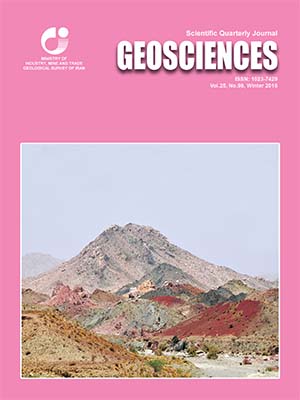Document Type : Original Research Paper
Authors
1 Associated Professor, Department of Geology, Faculty of Science, Urmia University, Urmia, Iran
2 M. Sc., Department of Geology, Faculty of Science, Urmia University, Urmia, Iran
3 Assistant Professor, Department of Geology, Faculty of Science, Urmia University, Urmia, Iran
4 Associated Professor, Department of Geology, Faculty of Science, Isfahan University, Isfahan, Iran
Abstract
Baba-Nazar garnet occurrence is located in northwest part of Sanandaj-Sirjan geological zone. Rock units in the area, including hornfels, garnetite and extensively weathered host rocks in contact with granite indicate garnet may have formed by metamorphism of clay-argillite, sandstone and calcareous rocks. The mineralogical and petrographical studies revealed that the evolution of mineralization has occurred during several progressive, retrograde and supergene alteration, while garnet has formed during progressive alteration. The results of the petrographical study of fluid inclusions show that most of the fluid inclusions in the garnet crystals fall in two groups: (1) Primary inclusions distributed randomly on the crystal faces and (2) secondary inclusions oriented along fractures and cleavage surfaces. Based on the inclusion diversity, four groups of these inclusions were differentiated: (1) single-phase liquid, (2) two-phase liquid-vapor, (3) solid multi-phase and (4) two-phase liquid–liquid. Micro thermometry of fluid inclusions in the garnet and quartz crystals show homogenization temperatures and salinities from 318 to 438 °C and 18.63 to 22.71 weight percent NaCl equivalent for garnet, and from 209 to 219 °C and 239 to 254 C° with 4.18 to 10.61 weight percent NaCl equivalent for quartz crystals.
Keywords

